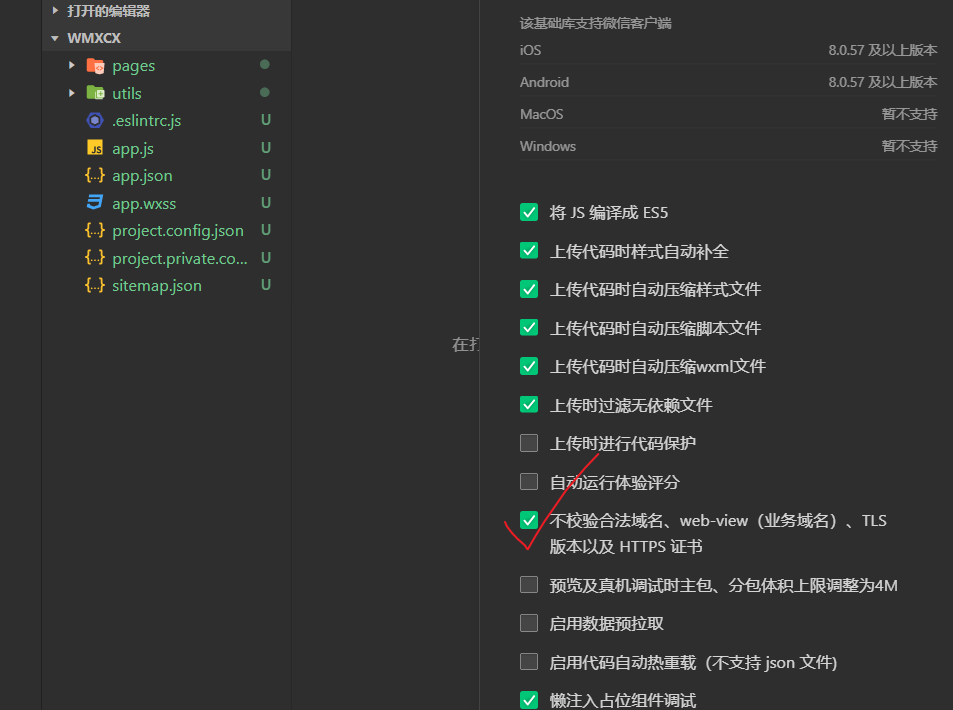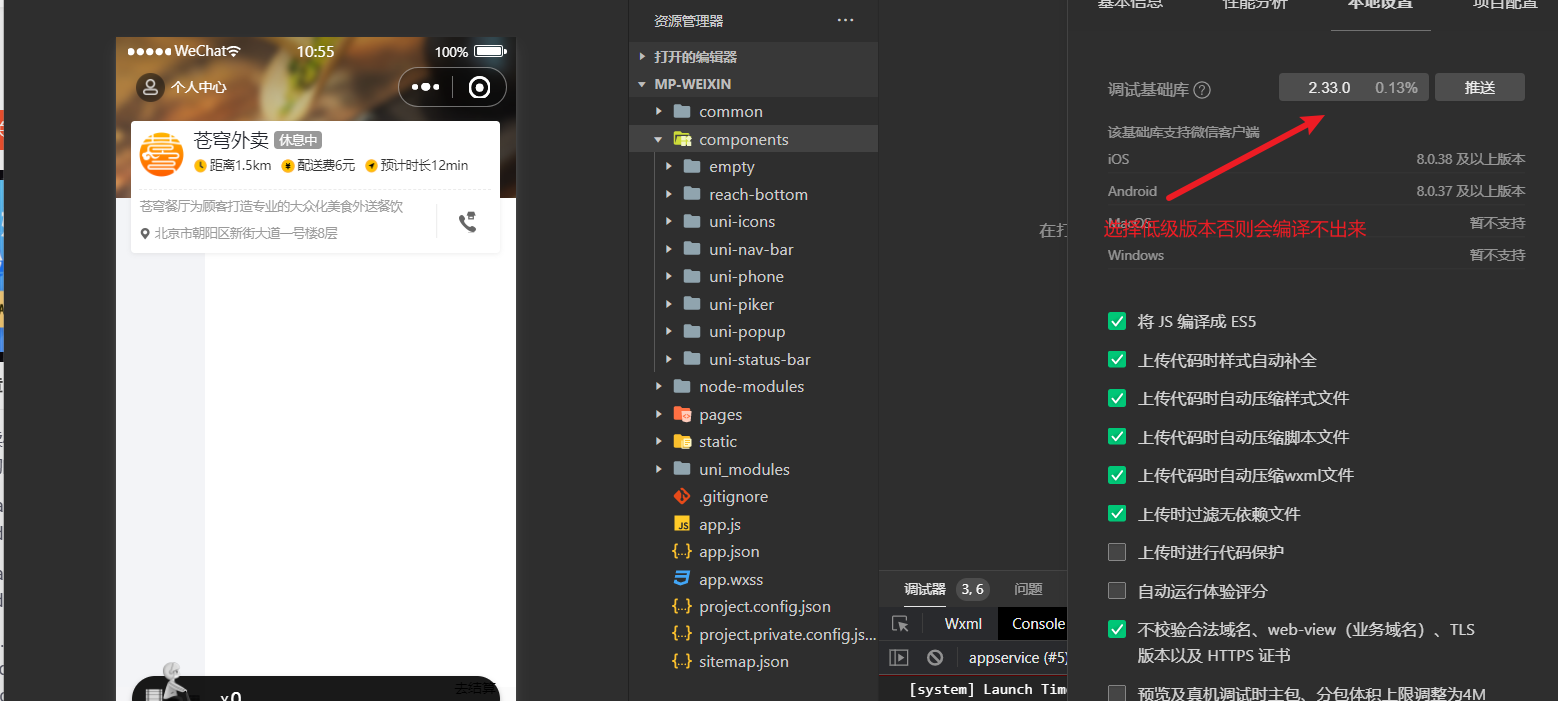HttpClient
介绍
HttpClient 是Apache Jakarta Common 下的子项目,可以用来提供高效的、最新的、功能丰富的支持 HTTP 协议的客户端编程工具包,并且它支持 HTTP 协议最新的版本和建议。
- 作用
发送HTTP请求
接收响应数据
- 应用场景
扫描支付、查看地图、获取验证码、查看天气等功能时
应用程序本身并未实现这些功能,都是在应用程序里访问提供这些功能的服务,访问这些服务需要发送HTTP请求,并且接收响应数据
- maven坐标
<dependency>
<groupId>org.apache.httpcomponents</groupId>
<artifactId>httpclient</artifactId>
<version>4.5.13</version>
</dependency>- 核心API
HttpClient:Http客户端对象类型,使用该类型对象可发起Http请求。
HttpClients:可认为是构建器,可创建HttpClient对象。
CloseableHttpClient:实现类,实现了HttpClient接口。
HttpGet:Get方式请求类型。
HttpPost:Post方式请求类型。
- 发送请求步骤
创建HttpClient对象
创建Http请求对象
调用HttpClient的execute方法发送请求
项目入门
阿里云OSS的maven里面依赖了HttpClient,就不用导入相关的API
GET请求
- 创建HttpClient对象
- 创建请求对象
- 发送请求,接受响应结果
- 解析结果
- 关闭资源
@SpringBootTest(classes = SkyApplication.class)
public class HttpClientTest {
/**
* 测试通过httpclient发送GET方式的请求
*/
@Test
public void testGET() throws Exception{
//创建httpclient对象
CloseableHttpClient httpClient = HttpClients.createDefault();
//创建请求对象
HttpGet httpGet = new HttpGet("http://localhost:8080/admin/shop/status");
//发送请求,接受响应结果
CloseableHttpResponse response = httpClient.execute(httpGet);
//获取服务端返回的状态码
int statusCode = response.getStatusLine().getStatusCode();
System.out.println("服务端返回的状态码为:" + statusCode);
HttpEntity entity = response.getEntity();
String body = EntityUtils.toString(entity);
System.out.println("服务端返回的数据为:" + body);
//关闭资源
response.close();
httpClient.close();
}
}POST请求
- 创建HttpClient对象
- 创建请求对象
- 发送请求,接收响应结果
- 解析响应结果
- 关闭资源
public void testPOST() throws Exception{
// 创建httpclient对象
CloseableHttpClient httpClient = HttpClients.createDefault();
//创建请求对象
HttpPost httpPost = new HttpPost("http://localhost:8080/admin/employee/login");
JSONObject jsonObject = new JSONObject();
jsonObject.put("username","admin");
jsonObject.put("password","123456");
StringEntity entity = new StringEntity(jsonObject.toString());
//指定请求编码方式
entity.setContentEncoding("utf-8");
//数据格式
entity.setContentType("application/json");
httpPost.setEntity(entity);
//发送请求
CloseableHttpResponse response = httpClient.execute(httpPost);
//解析返回结果
int statusCode = response.getStatusLine().getStatusCode();
System.out.println("响应码为:" + statusCode);
HttpEntity entity1 = response.getEntity();
String body = EntityUtils.toString(entity1);
System.out.println("响应数据为:" + body);
//关闭资源
response.close();
httpClient.close();
}微信小程序开发
官方网址:微信小程序
注册地址:小程序
登录小程序后台:微信公众平台/
完善小程序信息、小程序类目,查看小程序的 AppID
下载开发者工具:
下载地址: 微信开发者工具(稳定版 Stable Build)下载地址与更新日志 | 微信开放文档
微信登录
登录流程
用户进入到小程序的时候,微信授权登录之后才能点餐。需要获取当前微信用户的相关信息,比如昵称、头像等,这样才能够进入到小程序进行下单操作。是基于微信登录来实现小程序的登录功能,没有采用传统账户密码登录的方式。若第一次使用小程序来点餐,就是一个新用户,需要把这个新的用户保存到数据库当中完成自动注册。
步骤分析:
- 小程序端,调用wx.login()获取code,就是授权码。
- 小程序端,调用wx.request()发送请求并携带code,请求开发者服务器(自己编写的后端服务)。
- 开发者服务端,通过HttpClient向微信接口服务发送请求,并携带appId+appsecret+code三个参数。
- 开发者服务端,接收微信接口服务返回的数据,session_key+opendId等。opendId是微信用户的唯一标识。
- 开发者服务端,自定义登录态,生成令牌(token)和openid等数据返回给小程序端,方便后绪请求身份校验。
- 小程序端,收到自定义登录态,存储storage。
- 小程序端,后绪通过wx.request()发起业务请求时,携带token。
- 开发者服务端,收到请求后,通过携带的token,解析当前登录用户的id。
- 开发者服务端,身份校验通过后,继续相关的业务逻辑处理,最终返回业务数据。
说明:
- 调用 wx.login() 获取 临时登录凭证code ,并回传到开发者服务器。
- 调用 auth.code2Session 接口,换取 用户唯一标识 OpenID 、 用户在微信开放平台帐号下的唯一标识UnionID(若当前小程序已绑定到微信开放平台帐号) 和 会话密钥 session_key。
之后开发者服务器可以根据用户标识来生成自定义登录态,用于后续业务逻辑中前后端交互时识别用户身份。

注:开发阶段,小程序发出请求到后端的Tomcat服务器,若不勾选,请求发送失败。

相关配置
- application-dev.yml
sky:
wechat:
appid: wxffb3637a228223b8
secret: 84311df9199ecacdf4f12d27b6b9522d- application.yml
sky:
wechat:
appid: ${sky.wechat.appid}
secret: ${sky.wechat.secret}- 配置为微信用户生成jwt令牌
sky:
jwt:
# 设置jwt签名加密时使用的秘钥
admin-secret-key: guslegend
# 设置jwt过期时间
admin-ttl: 7200000
# 设置前端传递过来的令牌名称
admin-token-name: token
user-secret-key: guslegend
user-ttl: 7200000
user-token-name: authentication代码开发
- 定义VO,DTO
//DTO
public class UserLoginDTO implements Serializable {
private String code;
}
//VO
@Data
@Builder
@NoArgsConstructor
@AllArgsConstructor
public class UserLoginVO implements Serializable {
private Long id;
private String openid;
private String token;
}- controller
public Result<UserLoginVO> login(@RequestBody UserLoginDTO userLoginDTO){
log.info("微信用户登录:{}",userLoginDTO.getCode());
//微信登录
User user = userService.wxLogin(userLoginDTO);
//为微信用户生成jwt令牌
Map<String,Object> claims = new HashMap<>();
claims.put(JwtClaimsConstant.USER_ID,user.getId());
String token = JwtUtil.createJWT(jwtProperties.getUserSecretKey(), jwtProperties.getUserTtl(), claims);
UserLoginVO userLoginVO=UserLoginVO.builder()
.id(user.getId())
.openid(user.getOpenid())
.token(token)
.build();
return Result.success(userLoginVO);
}- service
/**
* jwt令牌校验的拦截器
*/
@Component
@Slf4j
public class JwtTokenUserInterceptor implements HandlerInterceptor {
@Autowired
private JwtProperties jwtProperties;
/**
* 校验jwt
*
* @param request
* @param response
* @param handler
* @return
* @throws Exception
*/
public boolean preHandle(HttpServletRequest request, HttpServletResponse response, Object handler) throws Exception {
//判断当前拦截到的是Controller的方法还是其他资源
if (!(handler instanceof HandlerMethod)) {
//当前拦截到的不是动态方法,直接放行
return true;
}
//1、从请求头中获取令牌
String token = request.getHeader(jwtProperties.getUserTokenName());
//2、校验令牌
try {
log.info("jwt校验:{}", token);
Claims claims = JwtUtil.parseJWT(jwtProperties.getUserSecretKey(), token);
Long userId = Long.valueOf(claims.get(JwtClaimsConstant.USER_ID).toString());
log.info("当前用户的id:", userId);
BaseContext.setCurrentId(userId);
//3、通过,放行
return true;
} catch (Exception ex) {
//4、不通过,响应401状态码
response.setStatus(401);
return false;
}
}
}- mapper
<select id="getByOpenid" resultType="com.guslegend.entity.User">
select * from user where openid = #{openid}
</select>
<insert id="insert" useGeneratedKeys="true" keyProperty="id">
insert into user (openid, name, phone, sex, id_number, avatar, create_time)
values (#{openid}, #{name}, #{phone}, #{sex}, #{idNumber}, #{avatar}, #{createTime})
</insert>拦截器
编写拦截器JwtTokenUserInterceptor:统一拦截用户端发送的请求并进行jwt校验
public boolean preHandle(HttpServletRequest request, HttpServletResponse response, Object handler) throws Exception{
//判断当前拦截到的是Controller的方法还是其他资源
if (!(handler instanceof HandlerMethod)) {
//当前拦截到的不是动态方法,直接放行
return true;
}
//1、从请求头中获取令牌
String token = request.getHeader(jwtProperties.getUserTokenName());
//2、校验令牌
try {
log.info("jwt校验:{}", token);
Claims claims = JwtUtil.parseJWT(jwtProperties.getUserSecretKey(), token);
Long userId = Long.valueOf(claims.get(JwtClaimsConstant.USER_ID).toString());
log.info("当前用户的id:", userId);
BaseContext.setCurrentId(userId);
//3、通过,放行
return true;
} catch (Exception ex) {
//4、不通过,响应401状态码
response.setStatus(401);
return false;
}
}protected void addInterceptors(InterceptorRegistry registry) {
log.info("开始注册自定义拦截器...");
registry.addInterceptor(jwtTokenAdminInterceptor)
.addPathPatterns("/admin/**")
.excludePathPatterns("/admin/employee/login");
registry.addInterceptor(jwtTokenUserInterceptor)
.addPathPatterns("/user/**")
.excludePathPatterns("/user/user/login","/user/shop/status");
}



















 2864
2864

 被折叠的 条评论
为什么被折叠?
被折叠的 条评论
为什么被折叠?








